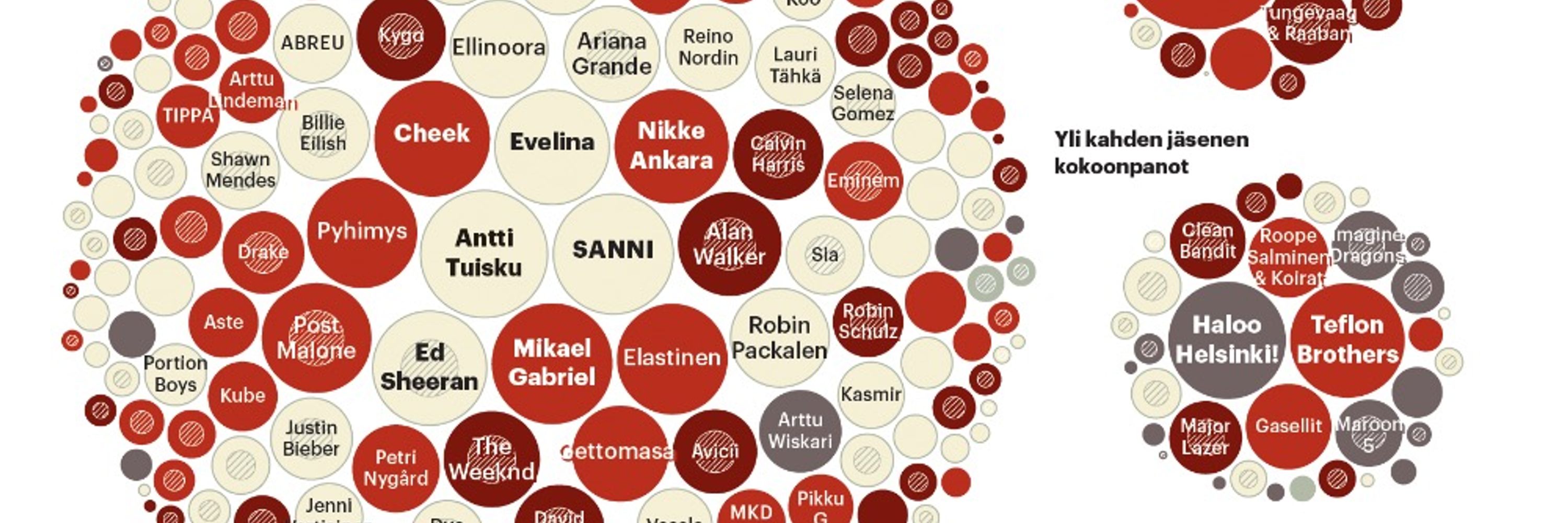
Co-author, “Data Visualization Handbook”
Teacher, data journalism & visualization at Haaga-Helia etc.
DJ
❤️ Maurizio, XCOM 2, GitS, Vernaccia di S. Gimignano
Output in 🇫🇮🇬🇧
Input also in 🇸🇪🇮🇹
Vaikka väite perustuu sinänsä pätevään tilastotietoon ja luku kertoo todellisesta, kiinnostavasta ilmiöstä, väite sellaisenaan ei ole useammastakaan syystä tosi. 1/11
Vaikka väite perustuu sinänsä pätevään tilastotietoon ja luku kertoo todellisesta, kiinnostavasta ilmiöstä, väite sellaisenaan ei ole useammastakaan syystä tosi. 1/11
”[Nova-luokituksessa] Ultraprosessoiduiksi luokittuvat esimerkiksi monet täysjyväleivät – – runsassuolainen voi, sokeri ja vähäkuituinen leipä eivät”

”[Nova-luokituksessa] Ultraprosessoiduiksi luokittuvat esimerkiksi monet täysjyväleivät – – runsassuolainen voi, sokeri ja vähäkuituinen leipä eivät”
This is a surprisingly impressive result. Prompt in alt. The typeface isn't exactly Garamond!
The Finnish translation is interesting, because the text was obviously done in a step separately from the graphics. Third pic both overlaid.
cc: @simonwillison.net



Todistuskappale 1: Hittimittarin raati vuodelta 1985. Ohessa pari poimintaa.


Todistuskappale 1: Hittimittarin raati vuodelta 1985. Ohessa pari poimintaa.
– Vaikka kymmenen kertaa ennen kuin nousee sängystä aamutoimille ja kymmenen kertaa ennen nukkumaanmenoa sekä aina muutaman kerran ennen kuin käy istumaan sohvalle”
– Vaikka kymmenen kertaa ennen kuin nousee sängystä aamutoimille ja kymmenen kertaa ennen nukkumaanmenoa sekä aina muutaman kerran ennen kuin käy istumaan sohvalle”
Tämä tuntuu jutun kontekstissa tosi oudolta väitteeltä. Jatkuva väkivallan uhka ja jo kouluikäisten sisäistämä pelon maantiede on kaukana nykypäivän tilanteesta, ainakin täällä pahamaineisessa Itä-Helsingissä, jossa itse asun. 1/

Tämä tuntuu jutun kontekstissa tosi oudolta väitteeltä. Jatkuva väkivallan uhka ja jo kouluikäisten sisäistämä pelon maantiede on kaukana nykypäivän tilanteesta, ainakin täällä pahamaineisessa Itä-Helsingissä, jossa itse asun. 1/
”En tee tätä kiusan vuoksi, vaan toivon, että metsätalous on vastuullista. Samalla arvostan sitä, että metsäyhtiöt ovat sitoutuneet tiukempaan FSC-sertifikaattiin.”
www.hs.fi/alueet/art-2...

”En tee tätä kiusan vuoksi, vaan toivon, että metsätalous on vastuullista. Samalla arvostan sitä, että metsäyhtiöt ovat sitoutuneet tiukempaan FSC-sertifikaattiin.”
www.hs.fi/alueet/art-2...
www.iltalehti.fi/politiikka/a...

www.iltalehti.fi/politiikka/a...
”Tuoreen tutkimuksen mukaan ihmiset käyttävät keskimäärin neljä tuntia päivässä ulkonäkönsä hoitamiseen.”
Luku on valtavan suuri. Voiko se pitää oikeasti paikkansa? 1/11

”Tuoreen tutkimuksen mukaan ihmiset käyttävät keskimäärin neljä tuntia päivässä ulkonäkönsä hoitamiseen.”
Luku on valtavan suuri. Voiko se pitää oikeasti paikkansa? 1/11
It is true actually! In the Global Carbon Budget we do not usually show the LUC like this, because of interannual variability & uncertainty. But it is what the data says!
politiken.dk/klima/art106...



yle.fi/a/74-20191367

yle.fi/a/74-20191367
Ehdotukset ovat järkeviä, ja niihin kannattaa tarttua heti.
Huomioita ketjussa 🧵
1/10
Tiedote ➡️ ilmastopaneeli.fi/ilmastopanee...

Ehdotukset ovat järkeviä, ja niihin kannattaa tarttua heti.
Huomioita ketjussa 🧵
1/10
As someone who probably still goes as Mrs. Yanne in some French records, this somehow breaks my brain :D.
(BTW still bigly mad that literary Finnish wasn't codified based on Savo dialect. It would've been gloriously silly.)

Mistä on kyse ja mitä sillä on väliä?
Ennen kaikkea: mitä asialle voi tehdä?
Tiivistys ketjussa 👇
1/30

Mistä on kyse ja mitä sillä on väliä?
Ennen kaikkea: mitä asialle voi tehdä?
Tiivistys ketjussa 👇
1/30

”Biologin silmin paras ratkaisu olisi rajaseudun luontokäytävä, joka olisi suojeltujen ja ennallistettujen soiden ja metsien mosaiikki. Vanhat, tiheät metsät tarjoaisivat suojaa luontokappaleille ja drooneilta piiloutuville taistelijoille.”
suomenkuvalehti.fi/paajutut/ei-...

”Biologin silmin paras ratkaisu olisi rajaseudun luontokäytävä, joka olisi suojeltujen ja ennallistettujen soiden ja metsien mosaiikki. Vanhat, tiheät metsät tarjoaisivat suojaa luontokappaleille ja drooneilta piiloutuville taistelijoille.”
suomenkuvalehti.fi/paajutut/ei-...
📸 The photo taken years ago by my friend Richard Strozynski has become a tradition in my client projects and courses.
I like to recolor it with different palettes to show how palette design affects perception.
Thread 👇

📸 The photo taken years ago by my friend Richard Strozynski has become a tradition in my client projects and courses.
I like to recolor it with different palettes to show how palette design affects perception.
Thread 👇
Tämä on faktaa, jonka tiedämme. Tiedämme mitä pitäisi tehdä. Toistaiseksi olemme ihmiskuntana olleet aika huonoja pelastamaan luontoa.

Tämä on faktaa, jonka tiedämme. Tiedämme mitä pitäisi tehdä. Toistaiseksi olemme ihmiskuntana olleet aika huonoja pelastamaan luontoa.


